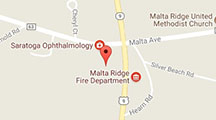A systematic literature review and narrative synthesis were conducted to identify the prevalence and magnitude of amblyopic eye visual acuity recovery after fellow eye injury or vision loss in adult patients. Source: AAO
The CDC lays out new recommendations for syphilis screening, including guidelines for detection via antibodies in serum or cerebrospinal fluid, direct observation, or histologic assessment. Source: AAO
Investigators explored the effects of anterior capsule polishing on the quality of the capsular bend and postoperative anterior capsule opacification and posterior capsule opacification following age-related cataract surgery. Source: AAO
Teleretinal screening appears to reasonably detect referrable diabetic retinopathy (DR) and diabetic macular edema (DME) from fundus images, with potentially better compliance than traditional screening. Source: AAO
Subfoveal choroidal thickness, as measured with swept-source OCT, may be a potential marker for measuring disease activity in thyroid eye disease. Source: AAO
Good performance is seen with a new uveal melanoma prediction tool that combines 15-gene expression profile (15-GEP) data and screening for expression of a known metastasis-associated antigen (PRAME). Source: AAO
The Spot Vision Screener is a popular photorefractive screening device that is often used to detect amblyopia risk factors (ARFs) in children. This study evaluated how well the screener was able to predict AAPOS guideline–defined ARFs based on variations in skin and ocular pigmentation. Source: AAO
A protocol based on neuro-ophthalmic principles may help professional football refereeing, ophthalmic injuries are seen in children who experience abusive head trauma, and rhegmatogenous retinal detachment (RRD) severity may be affected by social determinants of health. Source: AAO
Introducing an opioid into the post–ophthalmic surgery treatment mix can potentially increase the chances of hospitalization, opioid abuse/dependence, and all-cause mortality. Source: AAO
Artificial intelligence programs appear to have good ability to identify diabetic retinopathy from fundus images, suggesting their potential value as part of future diagnostic screening protocols. Source: AAO



